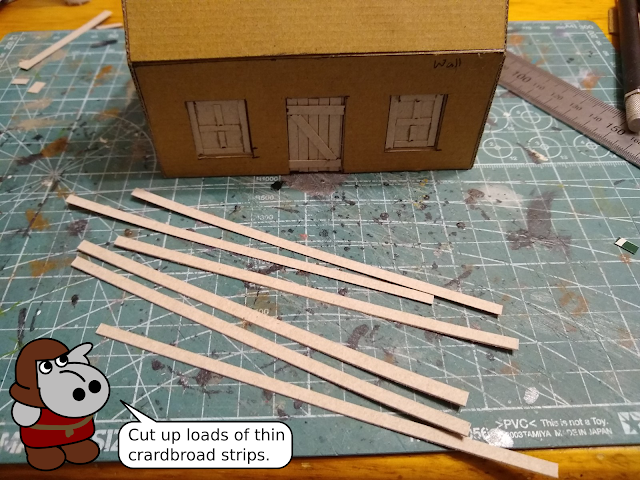I needed more high density foam over the weekend so I ended up at Bunnings. Bunnings now list two different brands online at the same price - the familiar yellow Knauf board and a new greenish-blue kind from Bastion. They have slightly different insulation specs, but the descriptions are basically the same (both a extruded, both claim to be 'closed cell,' both are quite tough and very light etc - although Bastion specifically lists 'hobbies' as one of it's uses, while Knauf only lists building applications).
Since the branch I was at had run out of 30mm Knauf, I bought some Bastion. And now I hope they get Knauf back in stock.
Here's why.
I did not photograph carving stone blocks using the 'V' shaped cut method as it works fine on Bastion. I also didn't photograph adding texture using the back end of a paintbrush and some preassure, or rolling a ball of tine foil. The paintbrush method works okay, but not great, and I have yet to try the tinfoil ball, but I suspect it will not be great as the bubbly surface will likely tear up (it did this to an extend with the paintbrush-butt method).
Bearing all that in mind, it's pretty clear that the Knauf foam is the better option. It carves beautifully, takes texture well and is pretty rugged even when cut thin. The Bastion board on the other hand is a little lighter, and if you don't want to carve it there's not really much of a problem. It would be fine for sand or grass covered modular terrain tiles or hills.
Of course, since both cost the same, it's really just a question of availability. If Knauf is there, buy the Knauf every time. I'm just worried that Bunnings may have changed supplier and won't be stocking the excellent Knauf foam any more. I've had a look online, and Knauf are still in business and their products are available from specialist insulation shops in much larger sheets, so I'm going to be buying online in future if Bunnings continues to fail me.
Snake Eyes Aftermath - Part 1
-
Recently we attended a slightly different Warhammer: The Old World
tournament. This was an event with teams of 3 players, where each round the
team would...
15 hours ago





















































